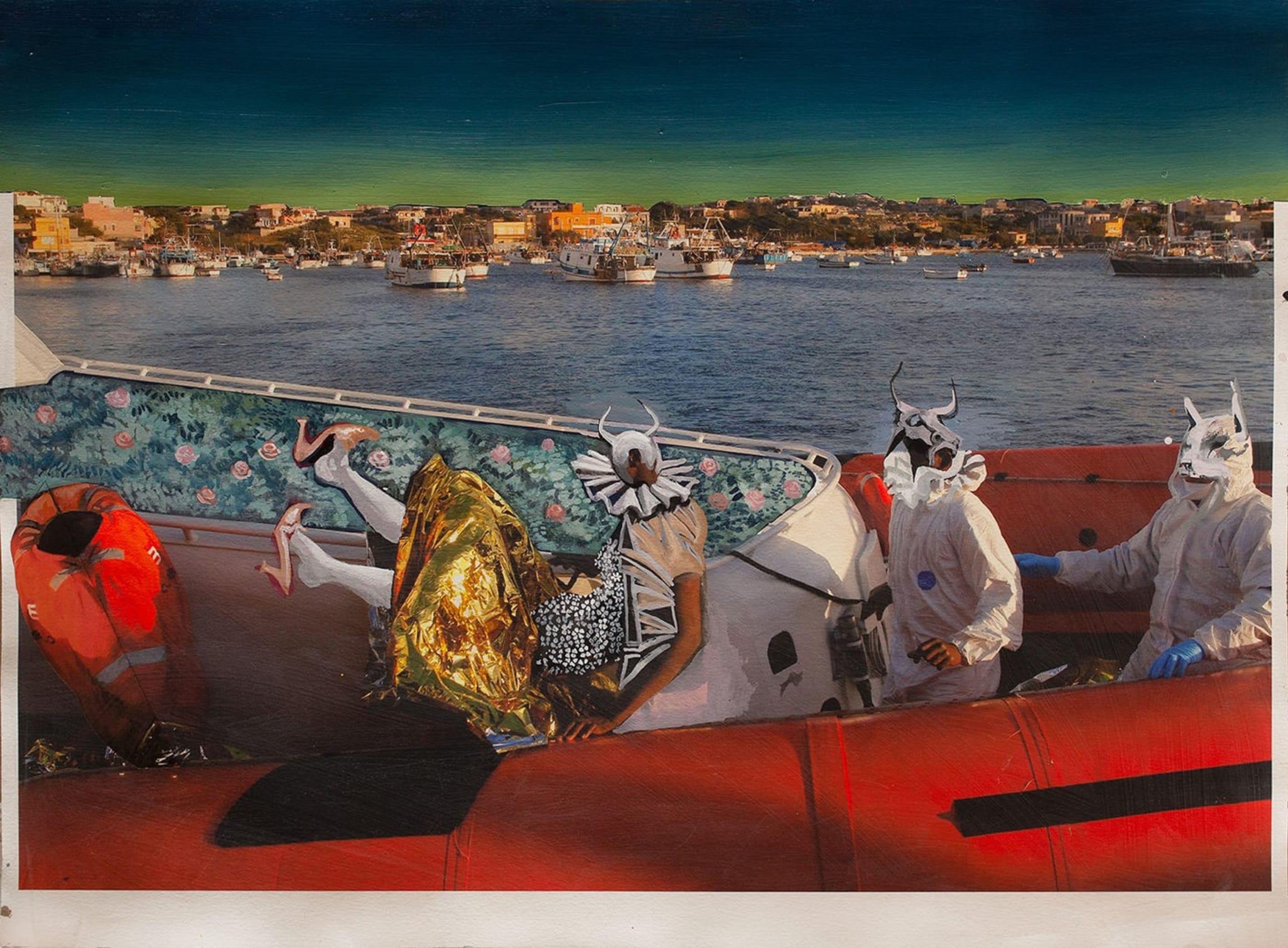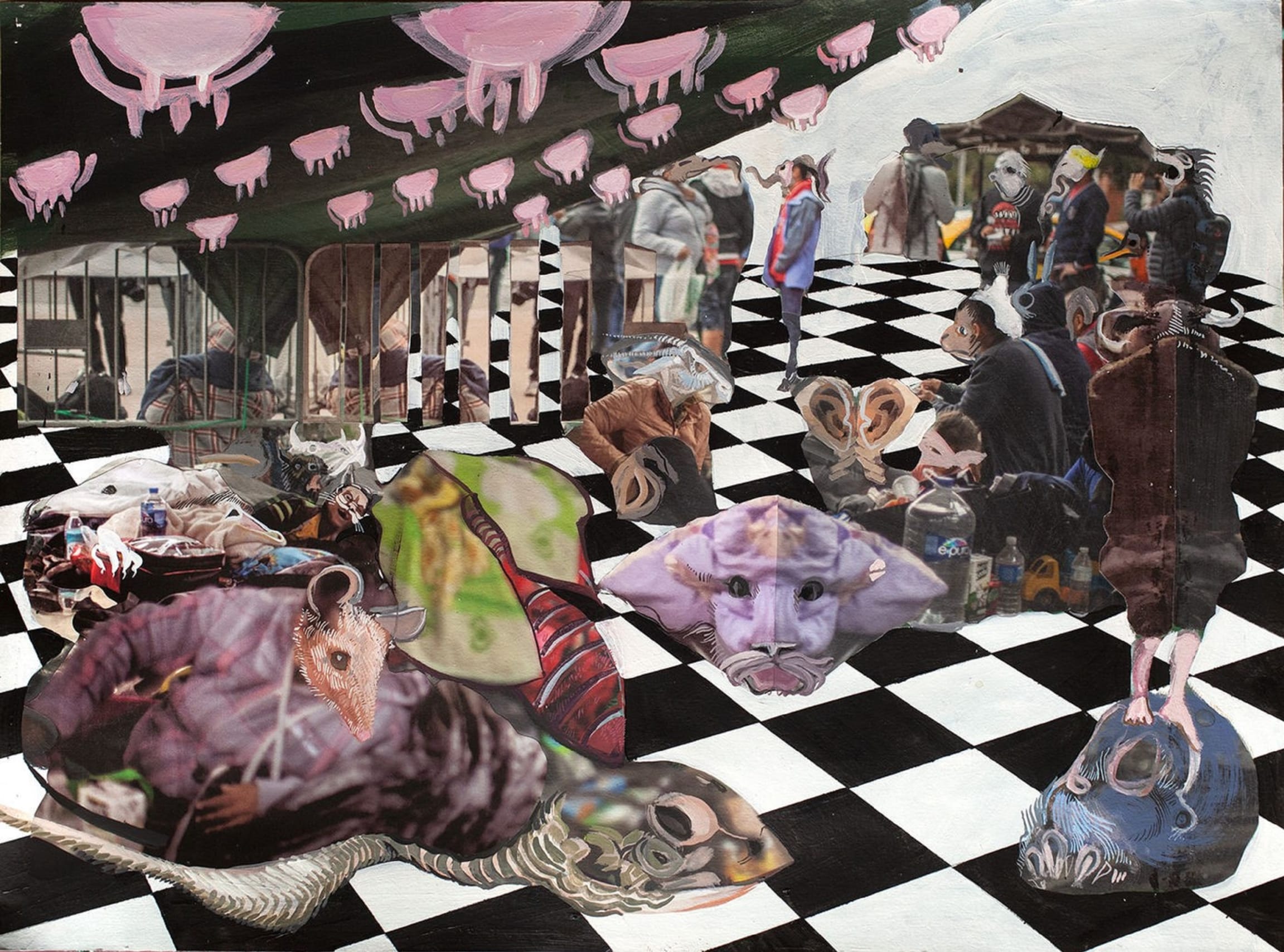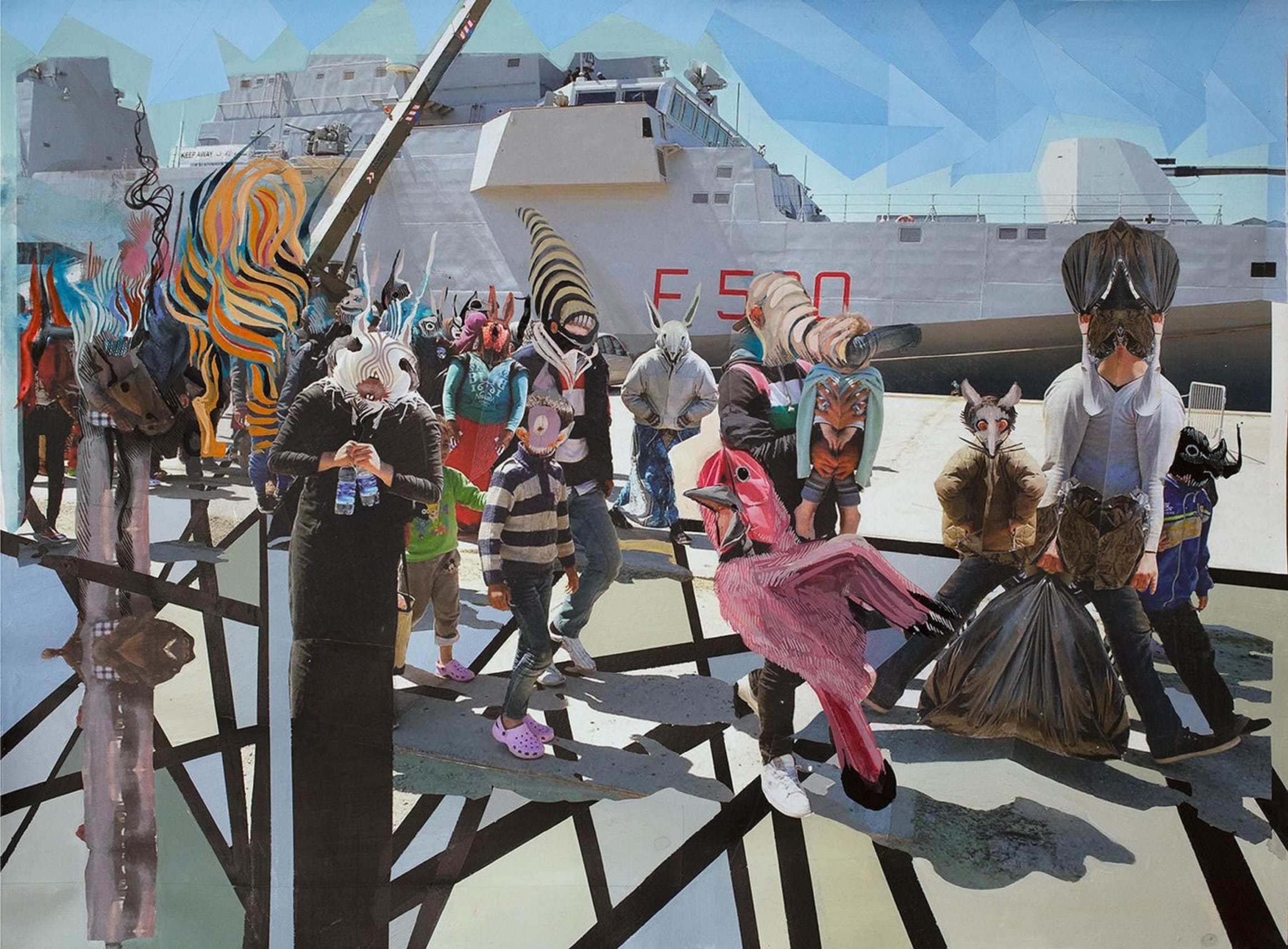Where to? Wherever It Chances, 2019




Galerie Krinzinger
Field of Negotiation is a collaborative technique of creating by a trio of artists, Ramin Haerizadeh, Rokni Haerizadeh, and Hesam Rahmanian. This generative field has become the core of a practice which avoids improvisation and unconstrained interaction, and takes on a multidisciplinary form: moving pictures, paintings, and installation among others. The aim of this practice is to yoke different positions and multiple angles of thinking onto one surface, a field of debate. The trio’s figurative language draws on documentary news images, Iranian literature, and Persian paintings from late-Safavid to the early Qajar dynasties. The work depicts the European refugee crisis as a tragic exodus of mythological proportions. People and objects are transformed into mythical creatures in view of the political situation that is both alienating and mournful. Refugee camps in France and Greece and other European cities form the background for the drawings using painting and collage to transform the picture and explore how we deal with the Other in our midst.
Ramin Haerizadeh (born 1975 in Tehran), Rokni Haerizadeh (born 1978 in Tehran), and Hesam Rahmanian (born 1980 in Knoxville) live and work together in Dubai since 2009. They work both independently and together, propagating a form of collaboration that nevertheless supports individualism. The seeds of their language were sown as early as 1999, back in Iran. Their practice offers up a novel redefinition of the collective, as theirs is constantly growing and contracting to incorporate friends, writers, and artists-at-large. Inherently subversive, the collective makes use of both low and high art references. And while their individual practices differ stylistically, common ground is found in political and social commentary. The exhibitions they conceive are insights into their daily practice as well, which they consider a veritable ritual of living and working together.